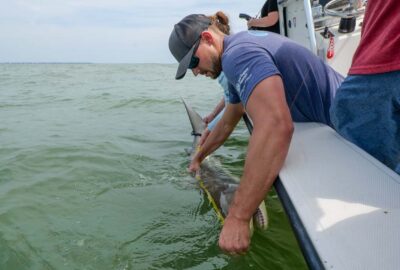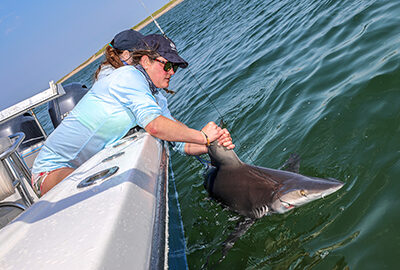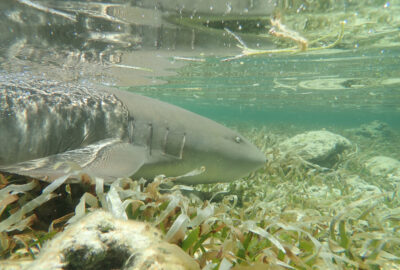Aquarium Scientists Investigate Effects of Recreational Fishing on Spinner Sharks
By New England Aquarium on Tuesday, February 06, 2024

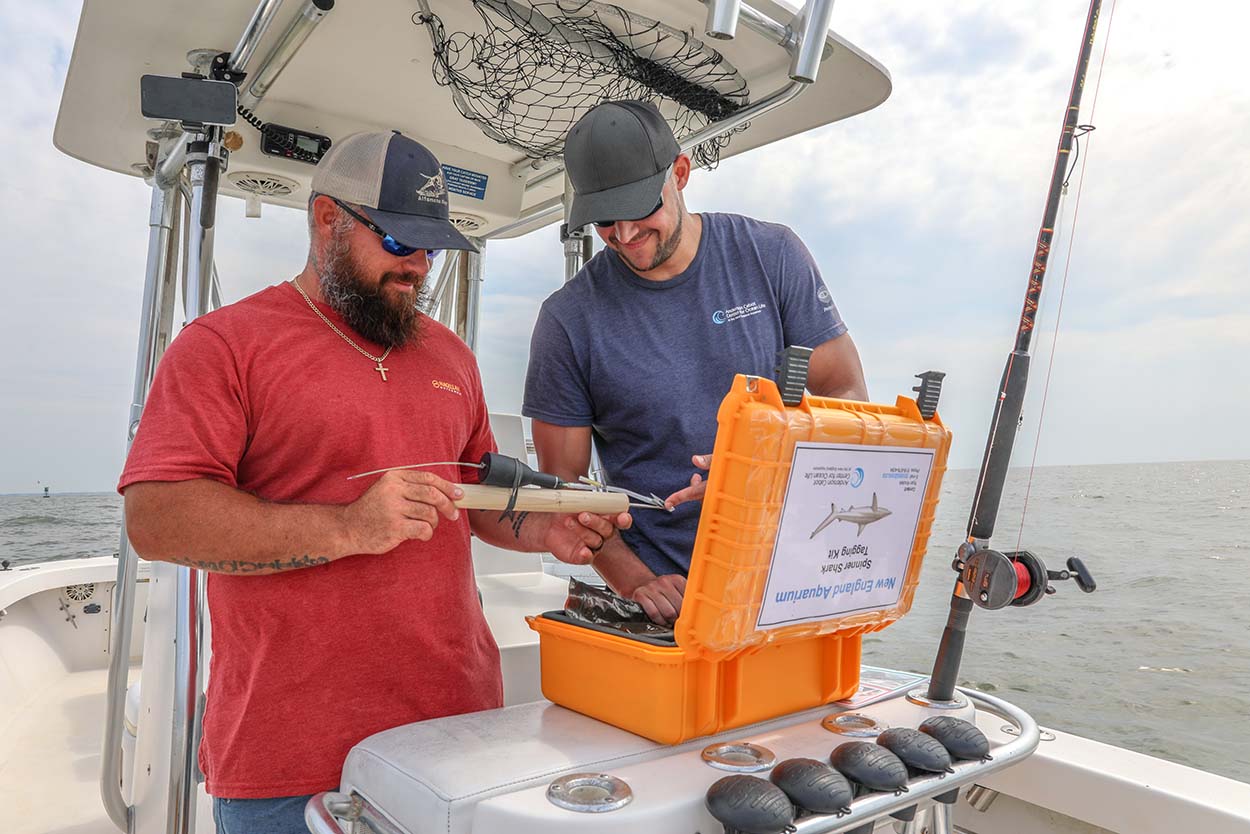
By Maria Palomino
For three days in June, Dr. Ryan Knotek and Caroline Collatos (PhD student, UMass Boston) fished off the coast of Georgia with the goal of catching and tagging spinner sharks. Knotek, an associate research scientist at the Aquarium’s Anderson Cabot Center for Ocean Life, is leading a study to determine if spinner sharks (Carcharhinus brevipinna)—a large coastal shark popular with anglers—are adversely impacted by catch and release in the Southeast recreational (rod-and-reel) shark fishery.
Since spinners are one of the most common recreationally caught sharks in the Southeast—with most of these animals released afterward—it is important to understand if the stress of capture affects their health and survival post-release. Funded by the National Oceanic and Atmospheric Administration’s (NOAA) Fisheries Cooperative Research Program, the data Knotek collects can help inform future stock assessments and the development of effective fishery management measures for spinners.
“Sharks are generally considered very susceptible to overfishing because of their life history characteristics. They grow slowly, mature later in life, and reproduce slowly, with some species having few offspring and long pregnancies,” says Knotek. “They often can’t reproduce fast enough to account for the sharks removed from their populations by fisheries, whether that’s sharks landed for consumption or those that die after release (aka, post-release mortality).”
Gray or bronze in color, spinners can grow up to nine feet in length and are slim and torpedo-like in shape. Well known for their acrobatics, spinners can be seen soaring out of the water and spinning when they feed and, much to the excitement of anglers, as they are being caught. They are highly migratory and inhabit the subtropical to temperate waters of the Atlantic, Indo-Pacific, and Mediterranean. In the US, they are found mostly in coastal waters from the Gulf of Mexico to the Southeast, but have been seen recently in southern New England as well.
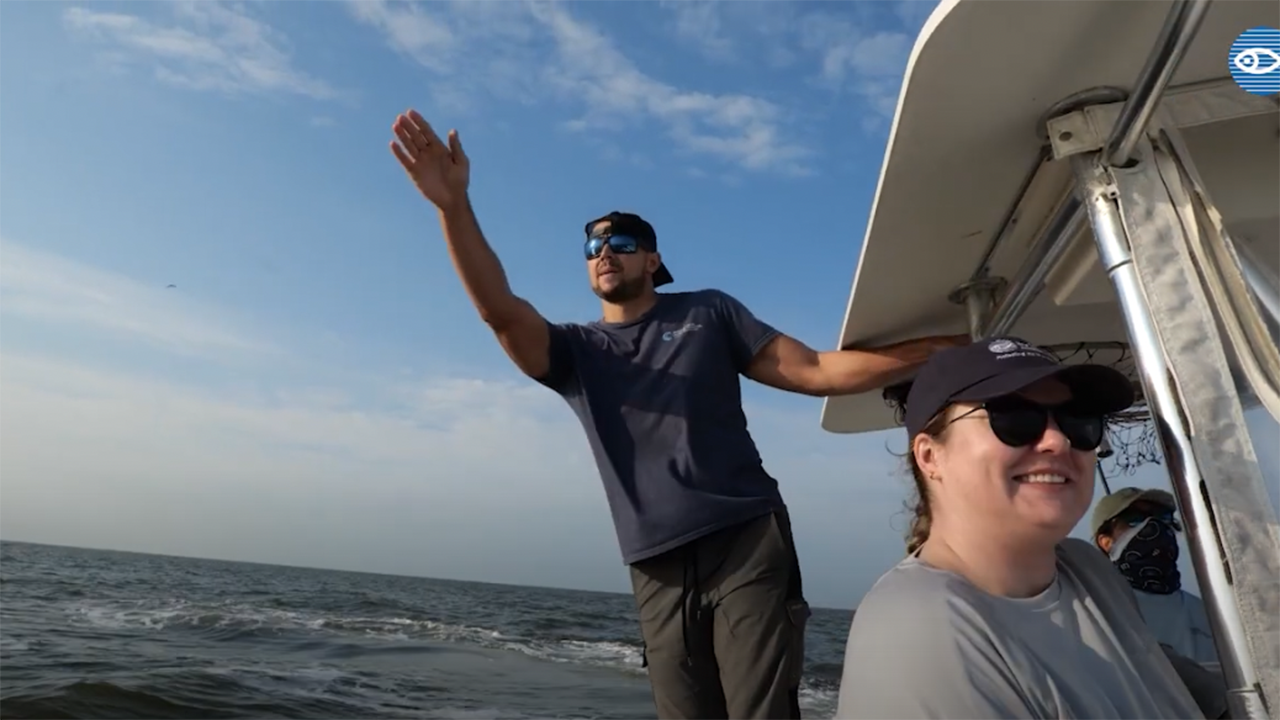
Spinner Shark Field Work
Aquarium scientist Dr. Ryan Knotek and a team traveled to Jekyll Island, Georgia, to study what happens to recreationally-caught spinner sharks after release.
Knotek arrived in Georgia with a supply of pop-up satellite archival transmitting tags and met with cooperative research partner Captain Josh Cook from the Georgia Sport Fishing Charters, a recreational charter outfit out of St. Simons and Jekyll Islands. For three relatively calm days, he and Collatos fished for spinners with Captain Cook. The two trained him to properly identify this species from similar sharks, affix satellite tags, and collect capture-related data. Working as a team, they carefully handled each shark alongside the boat, keeping them calm and oxygenated throughout the tagging process. The on-board team also included Aquarium Senior Aquarist Hannah Cutting and Senior Digital Media Specialist Vanessa Kahn.
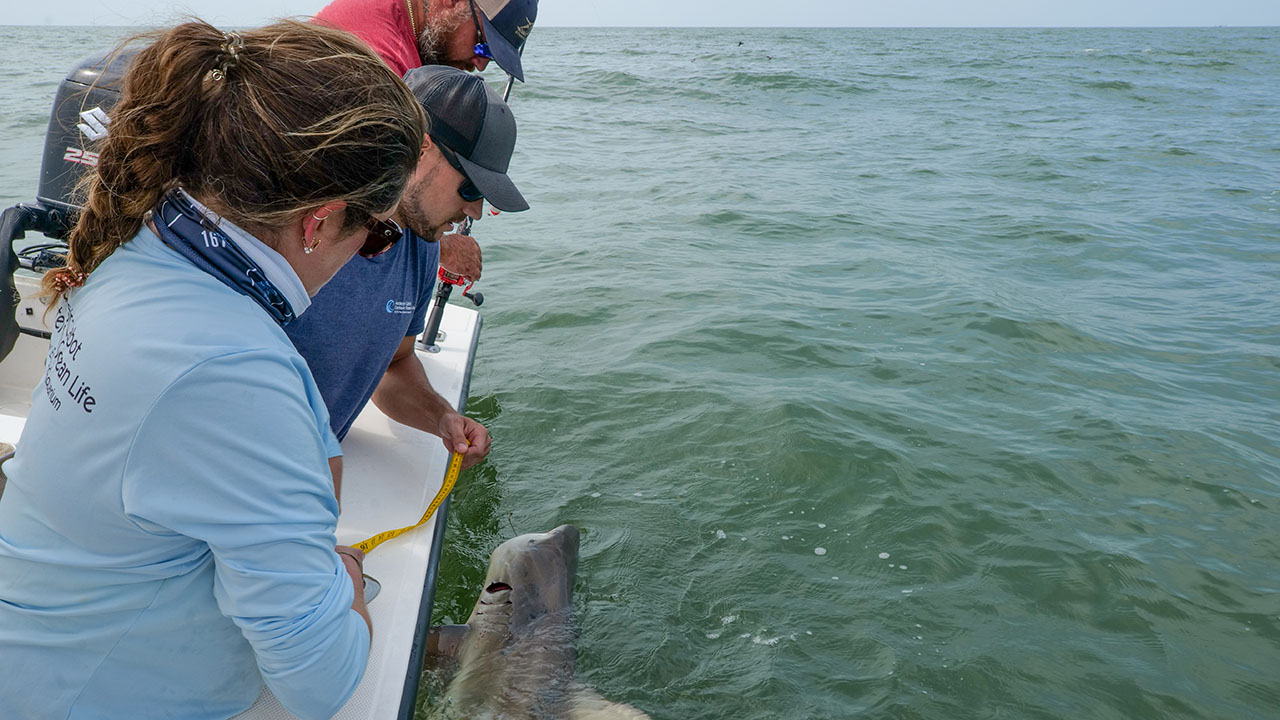
Recreational fishing charters rely on healthy and sustainable fish populations, which makes them ideal partners to assist with and contribute to fisheries research efforts. In the coming months, Aquarium-trained recreational charters will continue to independently tag spinners for this cooperative study—including other charters from Georgia and Florida (East and Gulf Coasts).
Knotek says the satellite tags will collect movement data from spinner sharks over 28 days, recording swimming depths, the surrounding water temperature, and light levels (used to geolocate each animal’s position on a map) every 10 seconds. These data, recovered via satellite transmission once the tag detaches and floats to the surface, will reveal if the spinner shark survived and the details of its journey. Tags include the Aquarium’s contact information should they wash ashore.
The study will also estimate the percentage of spinners that are misidentified by recreational anglers. Misidentification—for example, anglers frequently mistake spinners for blacktip sharks—can lead to inaccurate estimates of how many sharks are being caught and make it difficult to gauge the true impact of a fishery. Knotek and Collatos will canvass social media for catch reports to create a novel catalog of images to assess the actual misidentification rate for recreationally caught spinner sharks.
At the conclusion of the study next summer, Knotek says he’ll share their findings with the appropriate fisheries management and stock assessment bodies, and “the post-release mortality rate and misidentification rate will be used to calculate a more accurate estimate of how many spinners are dying from the recreational fishery.” Longer term, NOAA’s Highly Migratory Species Division can use these findings to develop an inaugural species-specific management plan for spinner sharks.
Knotek says working directly with fishing industries on cooperative research is essential, as it brings fisheries, scientists, and regulatory agencies together. “By getting all of these different players involved with grassroots research efforts to collect fisheries data, it improves the communication and understanding between fishers and management, which ultimately leads to more sustainable fisheries and shark populations.”
This story originally appeared in the Fall 2023 issue of blue magazine.

